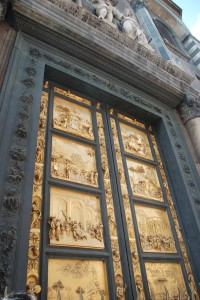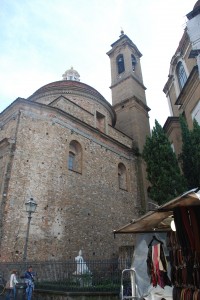Yearly Archives: 2009
Making Washi Part Two
Making Washi Part One
Home at my Studio
Over two months have passed since I have returned from Florence. I am left with inspiration and vivid memories, a few thousand photographs and video footage to edit. All my artwork arrived safely, and has been photographed and organized. In Spring, 2010 I will have an exhibition documenting my year long sabbatical. I have framed some of the prints created in Florence, and one of them has just received an honorable mention in a jured exhibition at the Lynn Arts Center in the “The Art of the Unique Print”.
Since returning, I have caught up with friends and colleagues and I have enjoyed sharing stories of my adventures living in Florence. It has been delightful to hear enthusiastic questions about my journey and what is was like to actually live in another country. It seems that many people share the same desire to stay and experience living somewhere else, and particularly in Italy. I was surprised how comfortable I felt learning the streets, the markets and I was elated when I could leave my map at home.

Ghibertti’s Doors
Walking to my studio each day was a continuing delight, as I passed by the Duomo, Campanile, Baptistry, the Gates of Paradise, San Lorenzo Cathedral, the Mercato Centrale, charming lanes and squares……………it was not as if I was lost, I just preferred to travel a different path each day.

Right out my door San Lorenzo Cathedral and market place………
My apartment was centrally located, I had a terrific landlady who helped me in so many ways, it was easy to get pretty much anywhere. I was also a five minute walk from the train station and bus stations which was a great way to get to Rome, Sienna, Tuscany and Cinque Terre.
When I returned to the Cape, I picked up where I left off and continued to do my woodcuts. I am also doing solar etching and using the image-on technique I explored in Italy. I have a great deal of visual material to use in my artwork. In addition I am finishing a number of book projects I began in Firenze.
On returning from Florence I began planning my trip to Japan to study papermaking. I selected an itinerary which turned out to perfect. One week in Kyoto and one week on the island of Shikoku making paper. The trip to Japan was planned for two weeks, and now in retrospect I wish it had been longer. I did however have an introduction to Japan and a very in depth paper making experience. I will elaborate with commentary, photos and video shortly.
Since I have returned, those whom I have come in contact with, and some are people I just know casually have shared a genuine sense of pleasure in my journey and what I have done. I really have appreciated all of your enthusiastic, questions, comments and responses.
More to follow………………….sara